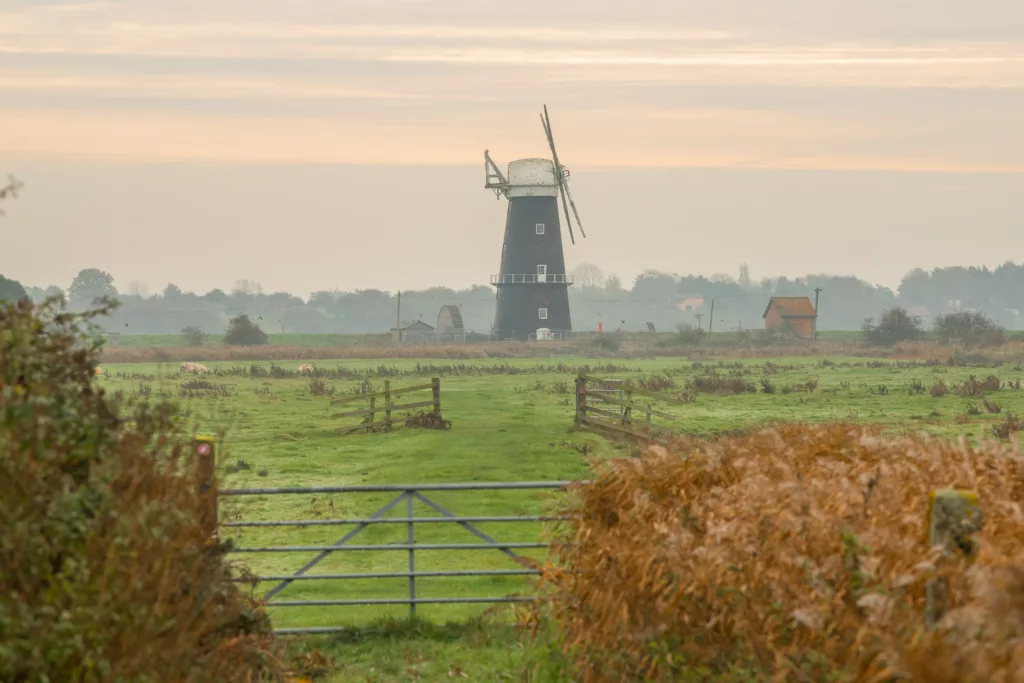Travel back in time and experience Victorian engineering used in the Halvergate marshes on this walk along the bank of the River Yare, between the railway stations at Berney Arms and Reedham.
Berney Arms, which was once the site of a concrete works, is now a popular spot for visitors who are charmed by its remoteness and natural surroundings. You’ll be sure to enjoy many points of interest along the route, including a railway swing bridge, steam and diesel engine houses, and several drainage windmills.
Your journey will start at Berney Arms station, which opened in 1844, and, located miles away from the nearest public road, can only be reached by foot, boat or train. The most notable building nearby is Berney Arms Mill, built in 1865 for the Reedham Cement Company. Interestingly, the mill, at 21.5m high, is the tallest drainage mill in the Broads!
The route follows the Wherryman’s Way, alongside the River Yare, to the Seven Mile Site. A cluster of preserved buildings demonstrate how, over time, the power of wind, steam, diesel and electricity were all harnessed to move water. Polkey’s Drainage Mill, which operates a scoopwheel, is maintained in full working order.
Approaching Reedham, you will catch sight of Reedham Swing Bridge. Originally opened as a single-track line in the 1840s, the current bridge dates from 1905 and carries the Wherry Line, between Norwich and Lowestoft, over the River Yare.
Your journey will end in Reedham, once a coastal village a long time ago when the Halvergate Marshes were then a tidal estuary. After a lovely walk, do not miss the opportunity to stop for a well-earned refreshment at one of Reedham’s pubs on the quay along the River Yare.
The Halvergate Marshes:
The Halvergate Marshes, located between the uplands in the West around Reedham, Halvergate, Acle and Great Yarmouth in the East are the largest section of drained marshes in the area, a defining characteristic of the Broads landscape.
Two thousand years ago, this area was a vast estuary made up of mudflats, creeks and rivers that flooded at high tide. Over time, water levels dropped, and people began to drain the landscape for grazing. This landscape is mostly below sea level, and over the last several centuries local people have been draining the marshes by cutting ditches and dykes and using engineering solutions to pump the water off the marshes to keep them from flooding. The most visible reminder of this engineering are the iconic drainage windmills, which still tower over the marshes and dykes below. The marshes are still actively drained, but where once brick and wooden windmills creaked to lift the water into the rivers to flow to the sea, electric pumps are now in use (still powered by the wind, via turbines located offshore).
Today the Halvergate Marshes are a haven for wildlife, and it is also a fertile grazing ground for horses, cattle and sheep, who enjoy the milder weather of Norfolk and nutritious grasses fed by the high-water table and peaty soils. The marshes offer vast panoramic views and is a perfect spot to escape the busy city located only a few miles away.



